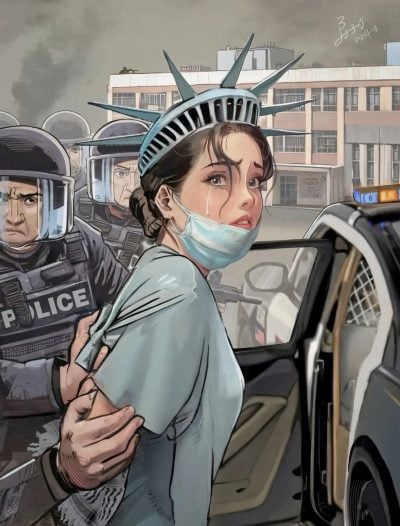Academic journal asking for evidence of racism in policing not interested in contradictory evidence

(Natural News) The co-director of Northeastern University’s Violence and Justice Research Laboratory, Carlos Cuevas, sent an email to faculty and graduate students in the school’s criminal justice department in July asking them to submit any research they have proving there is systemic racism in policing. In addition, he requested studies showing the use of excessive force by police. He also asked that they share the call for papers with colleagues, contacts and the American Society of Criminology.
In the letter, which was reprinted by Law Enforcement Today, Cuevas said he was working on a “special issue on Police, Violence, and Social Justice.”
It appears those behind the issue have already made up their mind about the slant, with an attachment to the email from the APA journal Psychology of Violence explaining the reasoning behind it: “Given the disproportionality of legally sanctioned police violence against members of black and brown communities, this special issue is designed to advance the scientific knowledge about the excessive use of force by some law enforcement officers as applied to members of communities of color with the goal of advancing prevention, intervention, and policy recommendation.”
The letter does not state whether contradictory research will be accepted to provide a more balanced and realistic view. However, when The College Fix reached out to ask if they would accept any research that contradicts their claim of racism among police, they gave a vague answer and then stopped responding to future inquiries.
The person who sent Law Enforcement Today the anonymous tip about Cuevas’s email called it a “slap in the face” and said that “thousands of alumni serve everyday in law enforcement.” Northeastern ranks in the top 1 percent in the nation for criminal justice students getting bachelor’s degrees.
Data does not support the notion of systemic police racism
According to the Washington Post’s Fatal Force database, a black man in America is more likely to be killed by a lightning strike than by a police officer. A closer look at data from 2019 shows that of the 1,003 people who were shot and killed by police in the U.S. that year, 250 were black and 405 were white. A total of 55 unarmed suspects were killed, again with more whites than blacks at 25 versus 14. It’s important to note that shooting unarmed suspects may be justified if they are trying to take an officer’s firearm, making a furtive movement, or attacking an officer. Among the 14 incidents where unarmed black men were shot and killed by police officers that year, several of them involved fights with officers, high-speed car chases, or weapons recovered at the scene.
Calculations carried out by Law Enforcement Today show that police shot and killed one unarmed black man out of every 3,141,721 black Americans. Although every death is a tragedy, this is hardly an epidemic worthy of the violent overreactions being seen across the nation. Plus, there is no way of saying for sure if racism was a motivation in most shootings – and sometimes the officers involved were also black.
In fact, the number of unarmed black people who are killed by police is so low that most Americans know them by name. Yet many more unarmed white people are killed each year by police, and hardly anyone can tell you their names. We can thank the media for that; their selective reporting ensures we only hear about the stories that support their narrative of racist police.
A study of police shootings found that suicidal whites were more likely to killed by police, yet no one accuses police of being racist against whites. Moreover, those shot and killed by police in 2019 were overwhelmingly male – is anyone accusing them of gender discrimination against men?
While no one wants to see police use excessive force on anybody, it is important to examine the statistics in a balanced and accurate way – and that is something that the editors of the Psychology of Violence journal do not seem very interested in doing.
Sources for this article include:



